



The Supreme Court
44 items

Supreme Court Document-Based Questions
Curriculum - 60 Lessons
Curriculum
60 Lessons
How can you help your students develop critical thinking skills? Explore Landmark Supreme Court cases that changed history. Give your students tools to evaluate the Court's rulings and their impact on American society. Analyze primary sources spanning five centuries--colonial codes of law, the Federalist Papers, the Constitution, contemporary photographs, case law, oral arguments, the Court's majority and dissenting opinions, and others. Each Document Based Question (DBQ) will lead them towards an understanding of the role played by the Court and an assessment of its decisions. Each DBQ also contains a section called "The Issue Endures," which highlights current applications of the case issue.
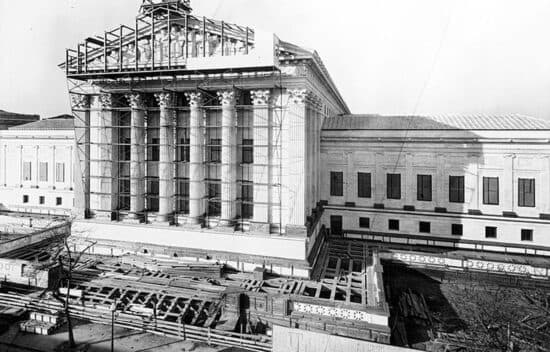
Landmark Supreme Court Cases
Page
Page
Read summaries of the majority ruling in landmark Supreme Court cases that have had an impact on our rights as citizens.
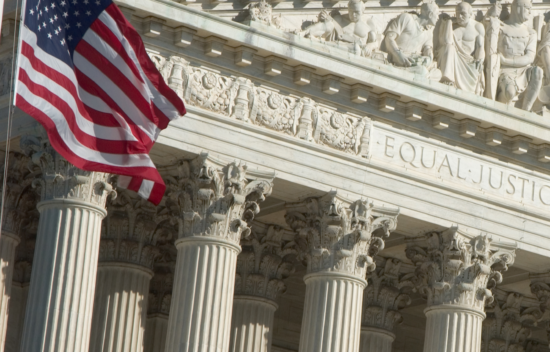
Supreme Court Round-Up 2011-2012
E Lesson
E Lesson
20 Min
Supreme Court Round-Up 2011-2012
As the Court winds down its 2011-2012 term, several key cases are still pending. Use the following resources and discussion questions to analyze the issues and discuss how you and your students believe the Court should rule under the Constitution.
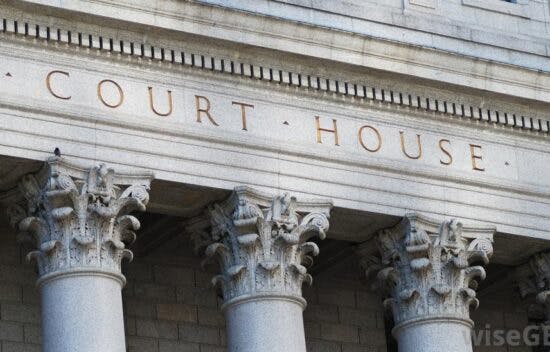
Supreme Court Round-Up 2012-2013
E Lesson
E Lesson
20 Min
Supreme Court Round-up 2012-2013
Use the following resources and discussion questions to analyze and discuss the constitutional issues on the 2012-2013 Supreme Court docket with your students.
Florida v. Jardines
Does the use of specially trained, narcotic detection dogs to sniff for drugs around someone’s house require a warrant?
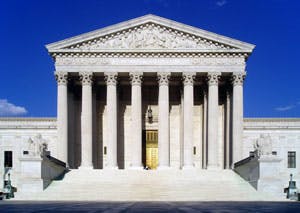
Supreme Court Round-Up 2013-2014
E Lesson
E Lesson
20 Min
Supreme Court Round-Up 2013-2014
Have students choose three Supreme Court cases from the list below. For each case should research and report the following information:
When was the case argued?
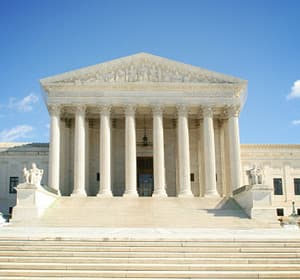
Supreme Court Round-Up 2014-2015
E Lesson
E Lesson
20 Min
Supreme Court Round-Up 2014-2015
Have students choose three Supreme Court cases from the list below. For each case, they should research and report the following information:
When was the case argued?
What was the question argued in the case?
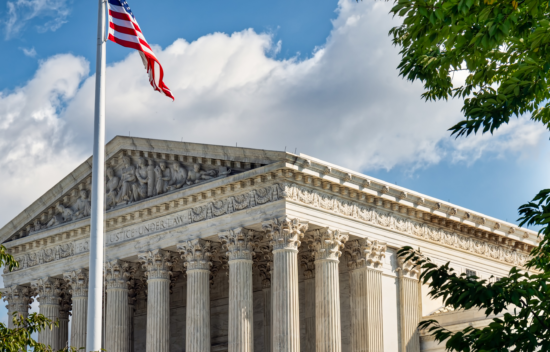
Supreme Court Round-Up 2015-2016
E Lesson
E Lesson
20 Min
Supreme Court Roundup 2015-2016
Have students choose three Supreme Court cases from the list below. For each case, they should research and report the following information:
When was the case argued?
What was the question argued in the case?
When was the case decided
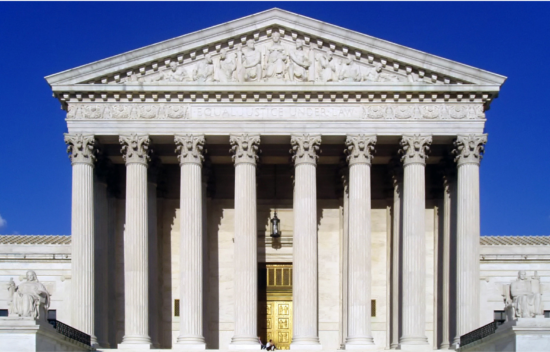
Supreme Court Roundup 2018-2019
E Lesson
E Lesson
20 Min
With cases involving everything from Native American tribal rights to the rights of death row inmates to endangered frogs to racial gerrymandering and more, this year has been a fascinating and productive one for the U.S. Supreme Court.
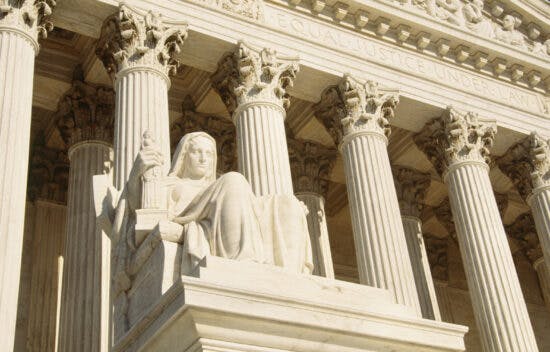
Supreme Court Roundup 2019-2020
E Lesson
E Lesson
20 Min
In the past eight months, the Supreme Court has heard and ruled on a number of important cases. Even in the midst of the COVID-19 pandemic, the highest court has adapted to continue hearing and deciding on cases remotely.

The Constitution and Supreme Court Nominations
E Lesson
E Lesson
20 Min
The task of nominating a new Supreme Court Justice is one of the president's more important jobs. What is the process of choosing a new member of the highest court of the United States? And what qualities make an ideal candidate for this job?
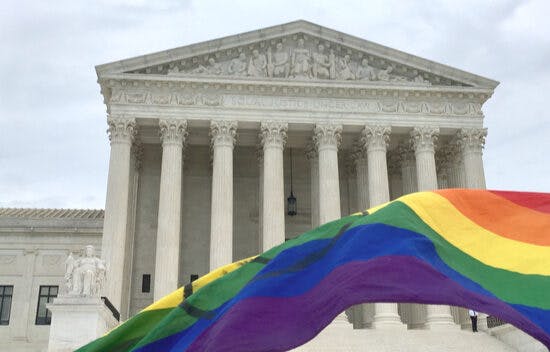
The Supreme Court and Same-Sex Marriage
E Lesson
E Lesson
20 Min
One of the great political debates that occupied our Founding Fathers was over the proper balance between democracy and individual rights. They had fought a war against the tyranny of a single monarch, but they were rightly concerned that the tyranny of the majority would do no better when it came to respect for minority rights.

Health Care and the Supreme Court
E Lesson
E Lesson
20 Min
Health Care and the Supreme Court
This week the Supreme Court is hearing oral arguments in the Department of Health and Human Services v. State of Florida, et. al. (2012) case. The case will decide the constitutionality of the Patient Protection and Affordable Health Care Act of 2010.
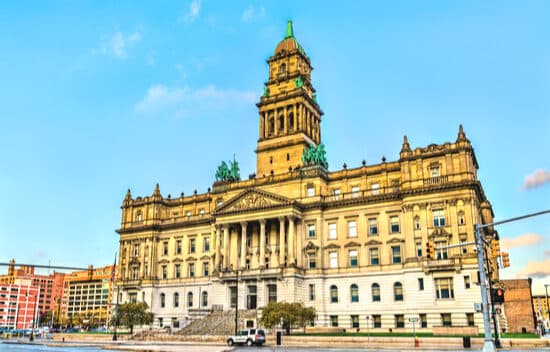
Federalism Court Cases
E Lesson
E Lesson
20 Min
This eLesson features Supreme Court cases regarding federalism, including a link to Oyez to learn more.

Property Rights and the Supreme Court
E Lesson
E Lesson
20 Min
In 2005, a couple bought 0.63 acres of land in a northern Idaho subdivision. They began making preparations to build a house by clearing the land and laying gravel for the foundation. Soon, however, the United States Environmental Protection Agency informed the couple that their land was classified as protected wetlands, and, absent the necessary permit, they would need to halt construction and bring the land back to its original state. For every day they did not comply, they could face a $37,000 fine authorized under the Clean Water Act.
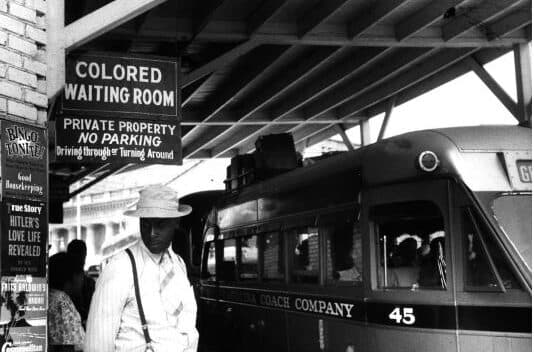
Equality and the Supreme Court: A Primary Source Study of Plessy v. Ferguson and Brown v. Board of Education
E Lesson
E Lesson
25 Min
Explores the idea of equality as seen in two landmark Court cases.
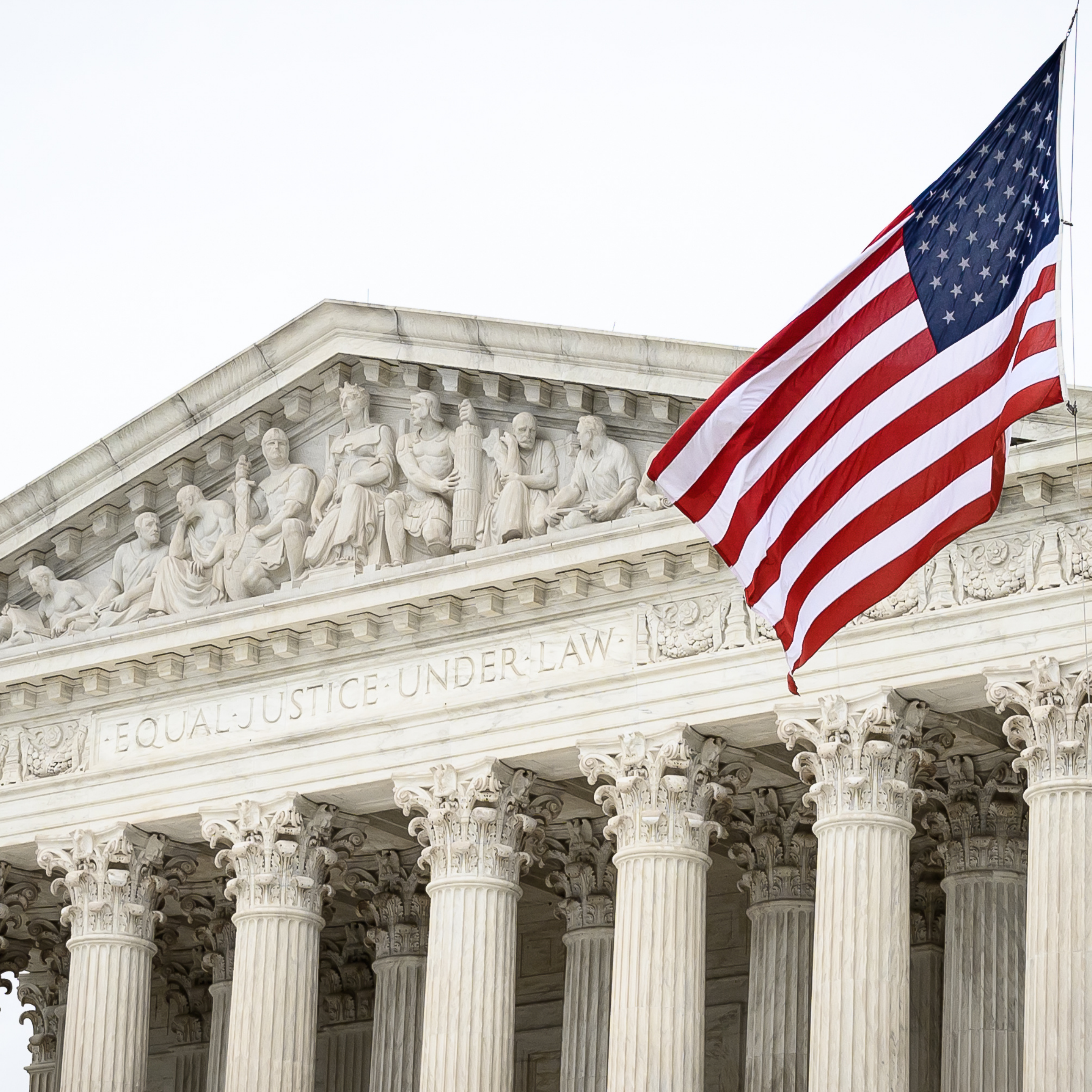
Religious Liberty: Landmark Supreme Court Cases
E Lesson
E Lesson
20 Min
The Court examined whether the federal anti-bigamy statute violated the First Amendment’s Free Exercise Clause, because plural marriage is part of religious practice. It unanimously upheld the federal law banning polygamy, noting that the Free Exercise Clause forbids government from regulating belief, but does allow government to punish activity judged to be criminal, regardless of an activity’s basis in religious belief. (Citation:98 US 145) BRI e-Lesson Available

Supreme Court GPS Warrant Ruling
E Lesson
E Lesson
20 Min
The United States Supreme Court upheld a District of Columbia Appeals Court ruling on the case United States v. Jones (2012) on Monday, January 23, 2012. The unanimous decision affirmed that police must obtain a search warrant before using Global Positioning System (GPS) devices to track the vehicles of suspected criminals.

Hiibel v. 6th Judicial District Court of Nevada (2003)
E Lesson
E Lesson
20 Min
This month’s Landmark Supreme Court Cases and the Constitution eLesson focuses on the rights of the accused case Hiibel v. Sixth Judicial District Court of Nevada (2003). In this case, the Supreme Court upheld Nevada’s “stop and identify” statute, reasoning that requiring individuals to identify themselves to police officers investigating crimes was not unreasonable.
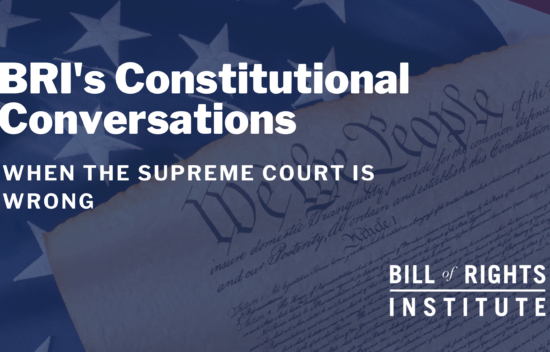
When the Supreme court is wrong | Mark Rienzi | BRI’s Constitutional Conversations
Video
Video
1 Min
Mark Rienzi discusses what happens when the Supreme Court is wrong, using Plessy v. Ferguson and Brown v. Board of Education of Topeka as examples.
1 Min
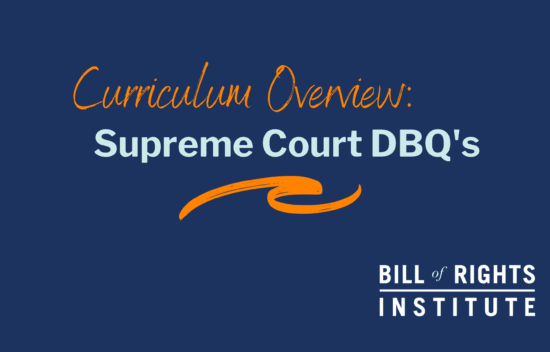
Supreme Court DBQs
Video
Video
1 Min
Supreme Court DBQs: Exploring the Cases that Changed History helps your students develop the critical thinking skills they need to evaluate the Court’s rulings and the impact of these rulings on American society. Your students will analyze primary sources spanning five centuries–colonial codes of law, the Federalist Papers, the Constitution, contemporary photographs, case law, oral arguments, the Court’s majority and dissenting opinions, and others. Key tasks for each DBQ will lead them towards an understanding of the role played by the Court and an assessment of its decisions. Each DBQ also contains a section called “The Issue Endures,” which highlights current applications of the case issue.
1 Min
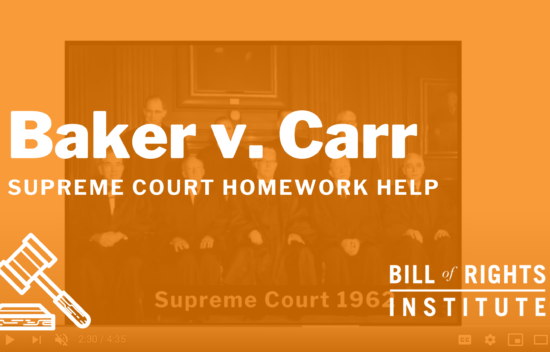
Baker v. Carr | Homework Help from the Bill of Rights
Video
Video
5 Min
In this Homework Help video, learn the story of the landmark Supreme Court case of Baker v. Carr. The case explores the question of a state’s right to control electoral lines otherwise known as gerrymandering.
The case ruling concluded that the Supreme Court could hear cases pertaining to redistricting because of the Equal Protection Clause in the 14th Amendment through the process of incorporation which argues that states must adhere to the protections of guaranteed in the Bill of Rights. How did the ruling in this case contribute to the democratic principle of “one person-one vote”?
5 Min
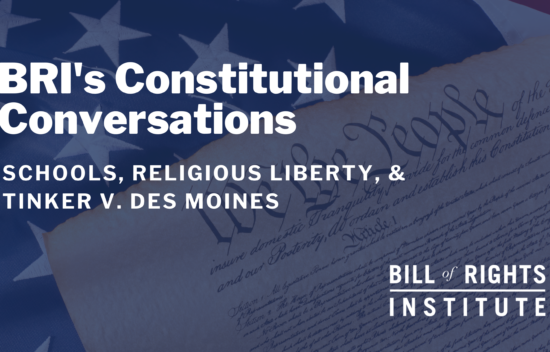
Schools, Religious Liberty & Tinker v. Des Moines | Mark Rienzi | BRI’s Constitutional Conversations
Video
Video
1 Min
Mark Rienzi, President of Becket Law discusses the importance of Tinker v. Des Moines for schools today.
1 Min
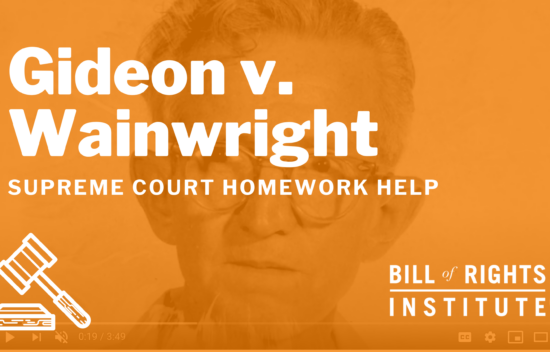
Gideon v. Wainwright | Homework Help from the Bill of Rights Institute
Video
Video
4 Min
Does an individual have a right to a lawyer, regardless of the crime he or she is charged with? In 1961, Clarence Gideon was arrested and charged with breaking and entering and petty larceny in Panama City, Florida. His request for a state-provided defense attorney was denied since Florida law only required doing so for capital offense cases. After Gideon was sentenced to 5 years in prison, he argued that Florida violated the 6th Amendment’s guarantee of the right to counsel. The Supreme Court heard Gideon’s case, in Gideon v. Wainwright, and ruled in a 9-0 decision that the 6th Amendment’s guarantee of an attorney applies to states through the Due Process Clause of the 14th Amendment through incorporation.
4 Min
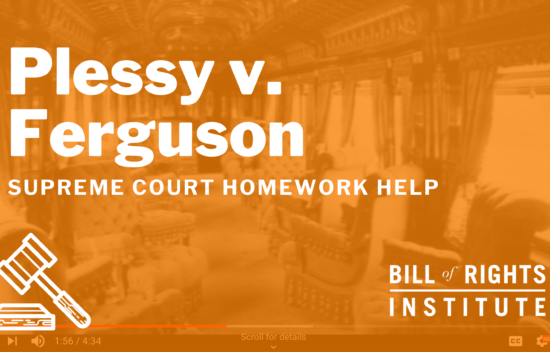
Plessy v. Ferguson | BRI’s Homework Help Series
Video
Video
5 Min
How did the odious doctrine of “separate but equal” become legally permissible in the U.S.? This Homework Help narrative explores the story of the Plessy v. Ferguson Supreme Court case. Further, analyze how the idea of “separate but equal” violates the Equal Protection Clause of the 14th Amendment through incorporation that was later struck down in the 1954 Brown v. Board of Education Supreme Court Case championing the passage of the Civil Rights Act of 1964. Due to the process of incorporation, the Supreme Court was able to eventually rule that the states had to adhere to the protections listed in the Bill of Rights.
5 Min
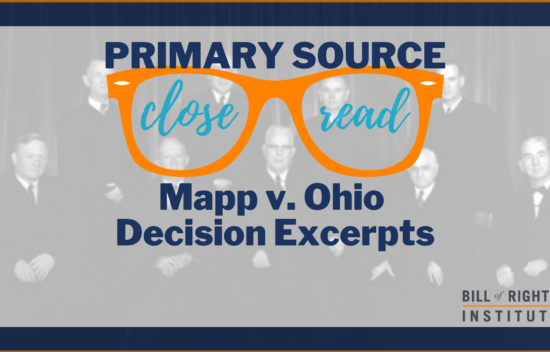
Reading Excerpts from Mapp v. Ohio |
A Primary Source Close Read w/ BRI
Video
Video
5 Min
Join BRI staff Kirk Higgins and Joshua Schmid as they break down excerpts from Mapp v. Ohio,
a landmark Supreme Court case that ruled that illegally obtained evidence cannot be used in a
state court. They'll explore how the majority and dissenting opinions conveyed very different
interpretations of how the 4th and 14th Amendments were meant to work together, and what
role the exclusionary rule has in state law. Did this ruling promote or prevent fairness in our justice system?
5 Min
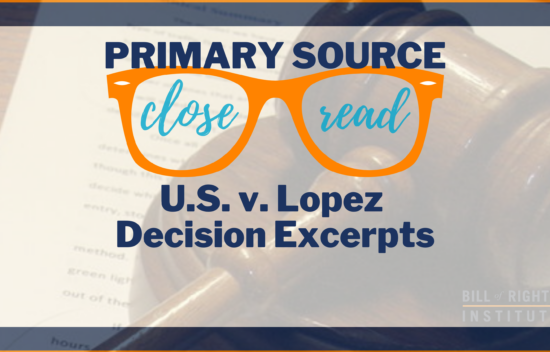
Reading Excerpts from U.S. v. Lopez | A Primary Source Close Read w/ BRI
Video
Video
23 Min
How does the Commerce Clause relate to gun regulation? To accompany our recently released U.S. v. Lopez Homework Help video, Tony and Josh break down opinions from the Supreme Court case itself, exploring how the majority and dissenting opinions tackled the relationship between education and commerce after a student brought a gun to school. What lasting impact did this case have on federalism?
23 Min
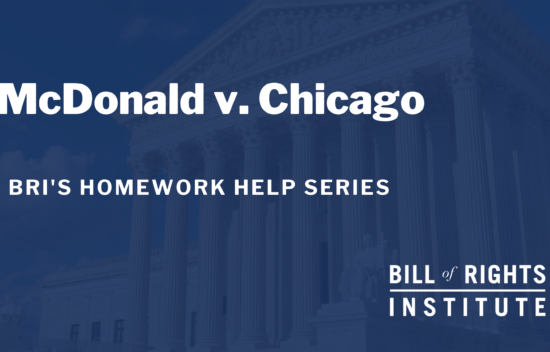
McDonald v. Chicago | Homework Help from the Bill of Rights Institute
Video
Video
4 Min
Does the Second Amendment prevent a city from effectively outlawing handgun ownership? In 2008, Otis McDonald attempted to purchase a handgun for self-defense purposes in a Chicago suburb. However, the city of Chicago had banned handgun ownership in 1982 when it passed a law that prevented issuing handgun registrations. McDonald argued this law violated the Fourteenth Amendment’s Privileges and Immunities Clause as well as the Due Process Clause. In a 5-4 decision, the Court ruled that McDonald’s Second Amendment right to bear arms was protected at the state and local level by the Due Process Clause of the Fourteenth Amendment.
4 Min

Dred Scott v. Sandford | Homework Help from the Bill of Rights Institute
Video
Video
3 Min
The Dred Scott v. Sandford case of 1857 was brought to the Supreme Court just four years before the start of the Civil War. Dred Scott sued his master for his freedom and Judge Robert Taney ultimately ruled two things. First, African Americans were not citizens and had no right to sue in court. Second, Congress did not have the constitutional authority to ban slavery from the states. This case is considered one of the worst rulings in the history of the Supreme Court.
3 Min

Marbury v. Madison | BRI’s Homework Help Series
Video
Video
3 Min
Marbury v. Madison was the Supreme Court case that established judicial review. William Marbury was a judge appointed at the end of John Adams’ presidency, but never got his official commission papers. Once Thomas Jefferson became president, James Madison refused to deliver the commission papers. Marbury took his case to the Supreme Court and wanted a Writ of Mandamus, requiring Madison to deliver the papers. Ultimately, the court stated that Marbury was entitled to his papers, but it was unconstitutional for the courts to issue a Writ of Mandamus. Thus, judicial review was created and the principle of checks and balances was strengthened.
3 Min

Brown v. Board of Education | BRI’s Homework Help Series
Video
Video
4 Min
Brown v Board of Education was a case brought to the Supreme Court in 1954 after Linda Brown, an African American student in Kansas, was denied access to the white-only schools nearby her house. Future Supreme Court Justice Thurgood Marshall was the lawyer for the case, and argued that segregated schools were inherently unequal. Ultimately, the Supreme Court ruled in favor of Linda Brown and declared segregation unconstitutional under the Equal Protection Clause of the 14th Amendment through incorporation under the premise that the bill of rights also applies to the states. This is one of the landmark cases that led to the passage of the Civil Rights Act of 1964.
4 Min
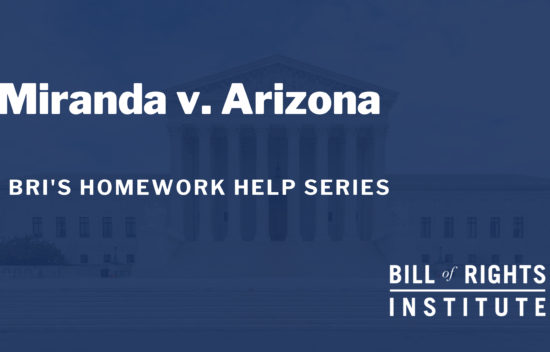
Miranda v. Arizona | BRI’s Homework Help Series
Video
Video
3 Min
Miranda v. Arizona was a case brought to the Supreme Court in 1966 after Ernesto Miranda appealed his guilty conviction of kidnapping and rape. In his appeal, Miranda claimed he was unaware of his right to remain silent and his resulting confession should not be used to incriminate him. The Supreme Court ruled in favor of Miranda and established the Miranda Warning. This warning is now recited in most instances of arrest to ensure the accused people are aware of their rights.
3 Min
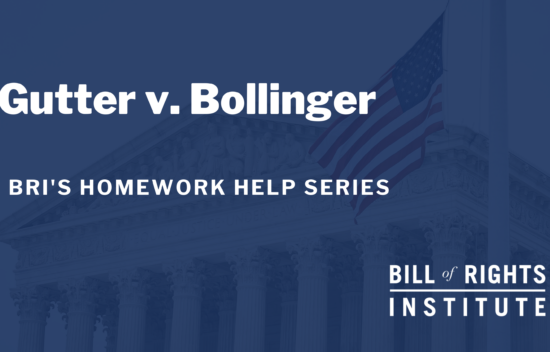
Grutter v. Bollinger | BRI’s Homework Help Series
Video
Video
4 Min
Grutter v. Bollinger was a case brought to the Supreme Court over the use of Affirmative Action in the college admissions process. The University of Michigan Law School denied acceptance to Barbara Grutter, despite her impressive resume. Grutter, a white woman, believed that her rejection was based on her race. The Supreme Court Justices ultimately ruled that the University of Michigan Law School’s admissions process was constitutional and did not violate the Equal Protection Clause in the 14th Amendment. Incorporation, the process of states being held liable to the Bill of Rights, allowed the Supreme Court to hear and rule on the case.
However, there was doubt among the most conservative Supreme Court justices like Scalia and Rehnquist that affirmative action policy was a constitutional practice for university admission departments to take part in. Affirmative Action is still a highly debated topic today.
What is Affirmative Action? Affirmative Action is a policy, usually carried out by schools, businesses, government entities, and federal contractors, in which individuals of minority racial status are afforded preferential treatment on the basis of race. Affirmative action came about as part of a desire to rectify the traditional underrepresentation of minority peoples in desirable professions and universities, which negatively impacted their financial and social conditions.
4 Min
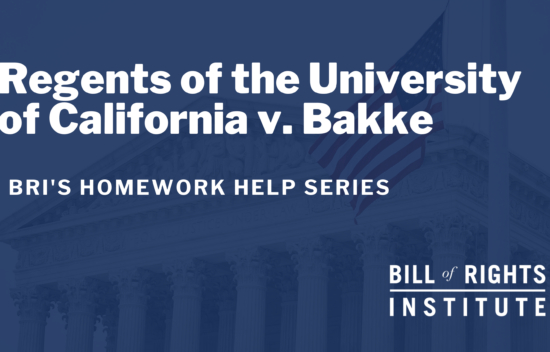
Regents of the University of California v. Bakke | BRI’s Homework Help Series
Video
Video
4 Min
Regents of the University of California v. Bakke was a case brought to the Supreme Court over the use of Affirmative Action in the college admission process. The University of California at Davis Medical School created a minimum minority student quota for the admissions department to fill each year. Bakke, a two-time UC-Davis Med School rejected applicant, sued the school for violation of the Equal Protection Clause of the 14th Amendment and Title VI of the Civil Rights Acts. Ultimately, the Supreme Court justices ruled in support of the goals of Affirmative Action because of incorporation, the idea that the states must adhere to the protections of the Bill of Rights. They also stated that Bakke was, in fact, denied equal protection. This decision, because it was so muddled, did not set long-term precedents or clarifications concerning Affirmative Action.
What is Affirmative Action? Affirmative Action is a policy, usually carried out by schools, businesses, government entities, and federal contractors, in which individuals of minority racial status are afforded preferential treatment on the basis of race. Affirmative action came about as part of a desire to rectify the traditional underrepresentation of minority peoples in desirable professions and universities, which negatively impacted their financial and social conditions.
4 Min
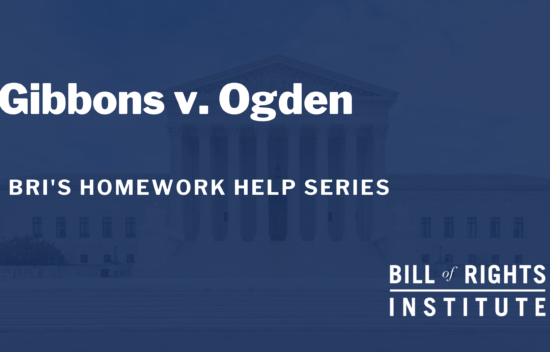
Gibbons v. Ogden | BRI’s Homework Help Series
Video
Video
3 Min
Gibbons v. Ogden was a Supreme Court case dealing with interstate commerce. In 1824, New York created a law that granted Aaron Ogden a monopoly over steamboat access to the Hudson River. Thomas Gibbons held a federal license to operate his steamboat between New York and New Jersey. Gibbons won unanimously through his connection of the Interstate Commerce Clause and Supremacy Clause. New York’s law was overturned and Gibbons, along with other steamboat operators were able to participate in Interstate Commerce via waterways.
3 Min

Citizens United v. FEC | BRI’s Homework Help Series
Video
Video
4 Min
Citizens United v. FEC was a Supreme Court case surrounding campaign finance and corporate involvement in politics. The Federal Election Commission was created in 1971 and greatly regulated the amount of campaign finance political candidates were able to receive. By 2002, the Bipartisan Campaign Finance Reform Act (McCain-Feingold Act) restricted organizations from financing issue-based advertisements on behalf of candidates. Citizens United released a million dollar ad against Hillary Clinton. Before the film aired, Citizens United challenged the McCain-Feingold Act, stating that money was a form of Free Speech, which is protected by the First Amendment. The Supreme Court ruled the McCain-Feingold Act as unconstitutional, but stated that corporations still cannot give money directly to political candidates.
4 Min

Schenck v. United States | BRI’s Homework Help Series
Video
Video
3 Min
Schenck v. United States was a Supreme Court Case that explained some limits to the Freedom of Speech afforded by the First Amendment. During World War I, the US instituted a military draft. Many people released anti-war and anti-government information due to their displeasure with the draft. Charles Schenck, an anti-war socialist, was arrested by the Federal Government for circulating a pamphlet encouraging men to resist the draft and violating the Espionage Act of 1917. The Supreme Court ruled that wartime circumstances changed the rules related to free speech and resulted in the “Clear and Present Danger” rule.
3 Min
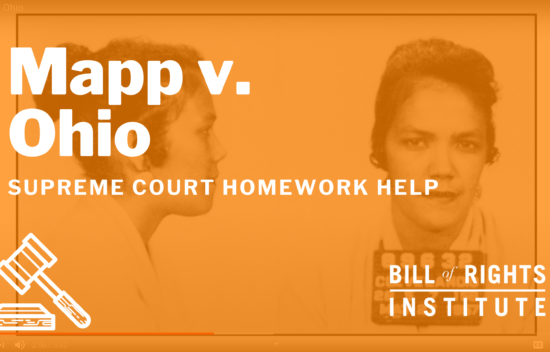
Mapp v. Ohio | BRI’s Homework Help Series
Video
Video
5 Min
Can the police use illegally seized evidence in a court of law? The landmark Supreme Court case Mapp v. Ohio addressed this issue, and the decision has had a lasting impact in the United States.
5 Min

McCulloch v. Maryland | BRI’s Homework Help Series
Video
Video
4 Min
McCulloch v. Maryland was the 1819 Supreme Court case dealing mostly with the issue of Federalism. The creation of a National Bank was encouraged by Alexander Hamilton, but opposed by Thomas Jefferson, due to lack of authority given by the Constitution. A National Bank was chartered, but then died 20 years later. In 1816, a National Bank was re-instated to help deal with debts from the War of 1812. This Second National Bank, established in Maryland, was taxed heavily by Thomas Jefferson and the State of Maryland. Federal Bank Cashier, James McCulloch, refused to pay the tax, stating that the state did not have the right to tax an institution of the Federal Government. Ultimately, the Supreme Court stated that Congress had the right to create the National Bank, under the Necessary and Proper Clause. Also, the State of Maryland did not have the right to tax the National Bank and the Federal Government under the Supremacy Clause.
4 Min
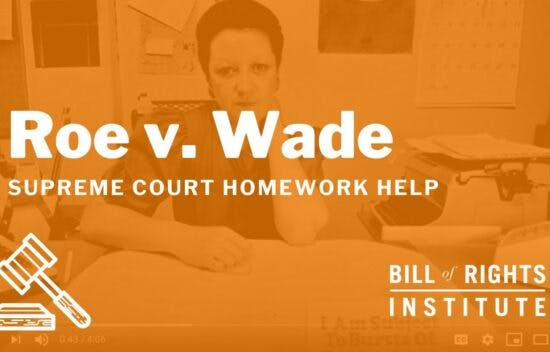
Roe v. Wade | Homework Help from the Bill of Rights Institute
Video
Video
4 Min
Do women have a right to privacy when deciding whether to have an abortion? In 1969, a woman under the alias “Jane Roe” challenged a Texas law that outlawed abortions. The case eventually reached the Supreme Court, where Roe argued that the Constitution protects a woman’s right to privacy in having an abortion. In a 7-2 decision, the Court ruled the right to an abortion fell within the right to privacy protected by the 14th Amendment’s Due Process Clause.
Like other Supreme Court cases related to the Due Process Clause, incorporation played a part in the Roe v. Wade ruling. Incorporation suggests that states must adhere to the protections granted in the Bill of Rights.
To this day, the ruling in Roe v. Wade remains one of the most controversial Supreme Court decisions.
4 Min
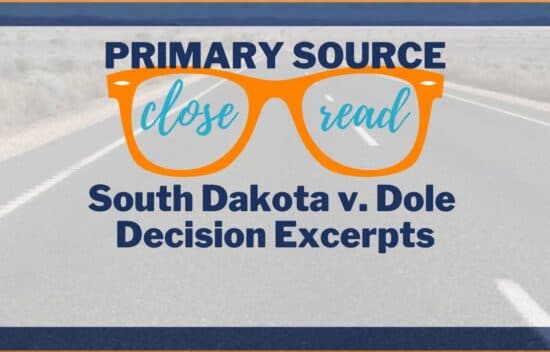
Reading Excerpts from South Dakota v. Dole | A Primary Source Close Read w/ BRI
Video
Video
25 Min
What authority does Congress have over spending? To accompany our South Dakota v. Dole Homework Help video, Mary and Josh explore decision excerpts from the case to fully understand the majority and dissenting opinions. Is it constitutional if Congress only gives states funding for highways if they set the minimum drinking age to 21? To what extent should Congress protect the welfare of society, and where should the line be drawn?
25 Min
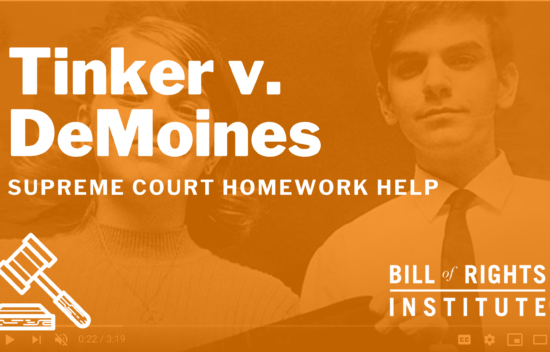
Tinker v. Des Moines | Homework Help from the Bill of Rights Institute
Video
Video
3 Min
Why did a subtle act of protest against a foreign war reach the Supreme Court? In 1965, students John and Mary Beth Tinker wore black armbands to school to protest the United States’ involvement in the Vietnam War, despite the Des Moines school district prohibiting such an act. The Tinkers sued the district for violating their First Amendment rights, and the Supreme Court ruled in their favor in a 7-2 decision. While subsequent Supreme Court rulings narrowed the scope of free expression rights at school, Tinker v. Des Moines remains a landmark case that has defined First Amendment rights for students.
3 Min

Tenth Period | John Marshall’s Decision, Marbury v. Madison
Video
Video
42 Min
BRI staff members, Kirk Higgins and Rachel Davison Humphries were joined by special guests Dr. Joyce Lee Malcolm, Professor of Constitutional Law and the Second Amendment at the Antonin Scalia Law School at George Mason University and Jotwan Daniels, 2019 BRI Teacher Council Member and Master Educator from Breckenridge, CO, as they discuss the famous Supreme Court case Marbury v. Madison. They analyze the impact of the case and discuss pedagogy techniques in a rousing discussion.
42 Min
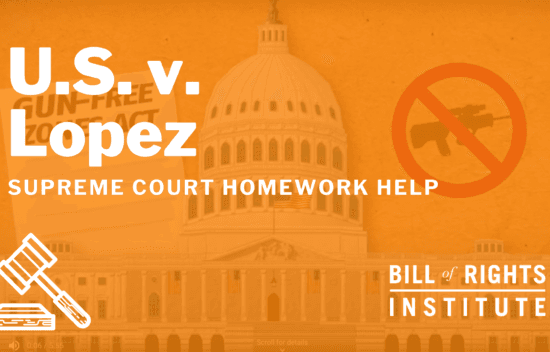
U.S. v. Lopez | BRI’s Homework Help Series
Video
Video
6 Min
This Homework Help narrative explores the landmark case of U.S. v. Lopez and its lasting impact on federalism. Students will study the topic of federal power and street crime while forming their own opinions on the merits of the case.
6 Min
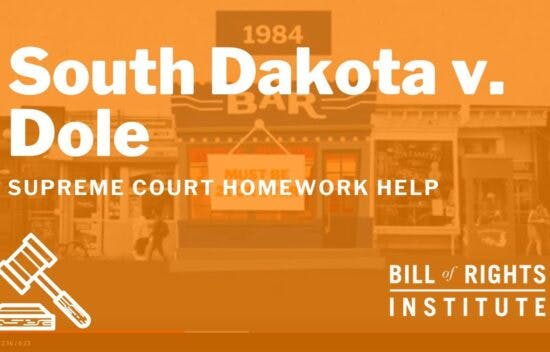
South Dakota v. Dole | BRI’s Homework Help Series
Video
Video
7 Min
Why is the drinking age set at 21? This Homework Help video explores the dispute between states and the federal government over the legal age, and how it is an example of the principle of federalism in action.
7 Min